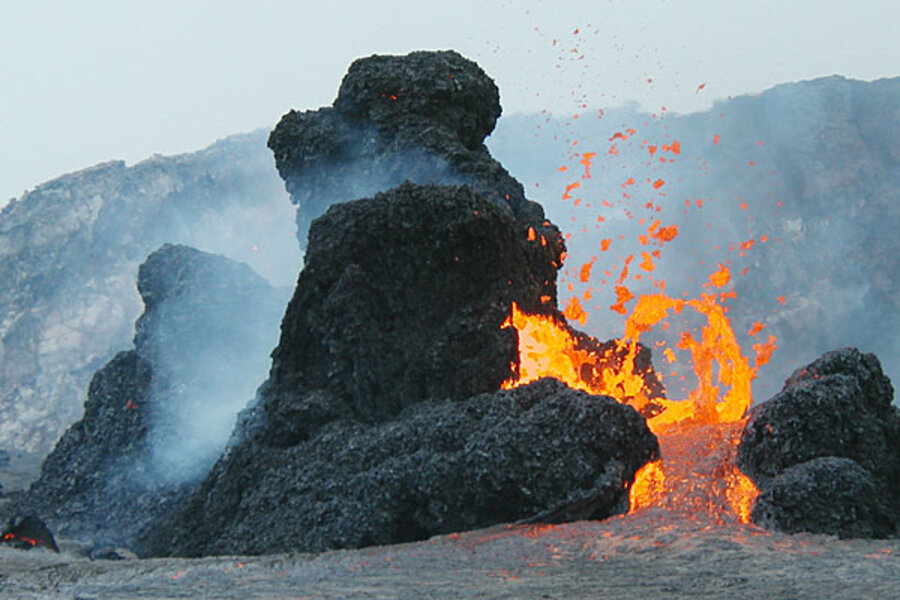New volcano probes: Journey to the center of the Earth?
Loading...
Super-heat-resistant radio transmitters could soon be dropped into volcanoes to provide early warnings of eruptions.
Conventional electronics are made with silicon, but such technology fails to function at about 660 degrees F (350 degrees C). The new electronics are made of silicon carbide, and can theoretically withstand up to 1,650 degrees F (900 degrees C), the kind of heat found inside jet engines.
The researchers are now working to integrate components made from the silicon-carbon compound into devices about the size of an iPhone. Scientists could drop such gadgets into the depths of the earth to help measure subtle changes in the levels of key volcanic gases, such as carbon dioxide and sulfur dioxide. They could then wirelessly feed back real-time data to the surface, providing vital details regarding volcanic activity and potential eruptions.
IN PICTURES: Pardon the eruption: Volcanoes around the world
"At the moment we have no way of accurately monitoring the situation inside a volcano and in fact most data collection actually goes on post-eruption," said researcher Alton Horsfall, a physicist at Newcastle University in England. "With an estimated 500 million people living in the shadow of a volcano, this is clearly not ideal."
"We still have some way to go, but using silicon carbide technology, we hope to develop a wireless communication system that could accurately collect and transmit chemical data from the very depths of a volcano," he added.
These tough devices could have other uses as well. For instance, if someone sets off a bomb in the subway, "this will still sit on the wall and tell you what's going on," Horsfall said. Silicon carbide is also very tolerant of high levels of radiation, opening up possibilities for the use of these electronics in the nuclear industry.
One challenge the researchers face is developing ways to power these devices, since batteries typically work at far cooler temperatures than what these silicon carbide electronics are designed for.
"Standard batteries, the ones you have in your calculators and the like, pretty much explode above 150 degrees C [302 degrees F]," Horsfall told TechNewsDaily. "Self-powered energy harvesting systems are going to be very important."
The researchers detailed their findings September 19 in the journal The Engineer.
IN PICTURES: Pardon the eruption, volcanoes around the world





